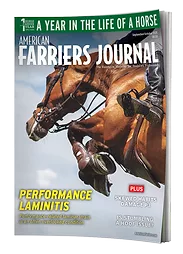Some say this country evolved on the backs of blacksmiths who supplied and repaired tools and equipment, household goods and weapons through the Colonial era. Working at a hot brick hearth or forge, backs bent, they pumped bellows to feed the fires until metal at the end of their tongs became pliable. They banged and hammered their way into the Industrial Age.
These days, blacksmiths still work forges, creating tools, knives and unique works of art.
Over 160 blacksmiths gathered at the Farm Museum on Saturday and Sunday for Blacksmith Days, an event hosted by the Blacksmith Guild of Central Maryland.
“This is our 29th year to hold Blacksmith Days,” says Ray Neubauer, a member of the guild’s board of directors. “It’s gotten bigger and bigger. What everybody thinks of as a dying art is not.”
Neubauer says the guild has about 250 members
“We bring demonstrators in, either local or from out of state,” he says of Blacksmith Days. “We’ve had them from as far as California and Nova Scotia, and we also have the Maryland Farriers Association here — a great group of people with some phenomenal smiths.”
Past president of the guild, Bill Clemens, of New Columbia, Pa., represented Artists Blacksmiths Association of North America (ABANA) at the event. He says a class at the John C. Campbell Folk School in Brasstown, N.C., got him started 18 years ago.
“It’s very interesting how you can take a piece of cold, hard steel, heat it up and then manipulate it like a piece of clay,” he says.
For Clemens, the items created using that clay-like steel include sundials, coat racks and jewelry, but he has a reputation for his strap hinges. He smiled when asked whether he's ever been burned.
“I’ve been burned a few times, but not so much anymore. You learn to respect the metal," he says.
Joe Polignone, of Glenwood, Pa., hammered out a tiny horseshoe pendant. A farrier by trade, he says he has definitely felt the burn.
“I do hot shoeing,” he says. “When a horse pulls you around, you can get hit by a hot shoe, but two of my worst burns were while making a horseshoe. [The first time] I didn’t have the right size tongs and the shoe slipped around the anvil and actually caught me in the mouth. I’ve also had an anvil chip and a piece of it went into my chest. I had to have it removed. But you learn. You start to make the tools work for you.”
A guild member for about 4 months, Polignone spoke of all they do.
“There are monthly hammer-ins every month. You bring your own project or work on a group project together,” he says. “The networking is important.”
Polignone stressed the importance of the trade.
“We need to understand that a lot of things we have today wouldn’t exist if we didn’t have a hammer and an anvil,” he says. “It all started there.”






